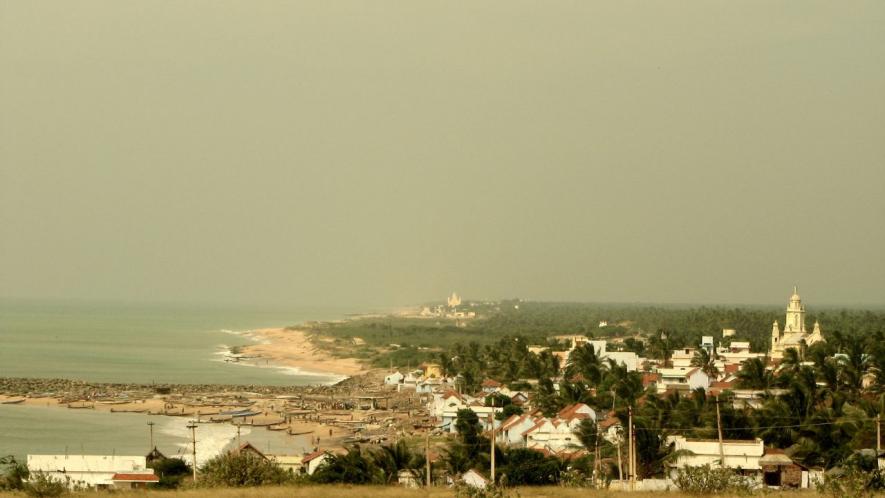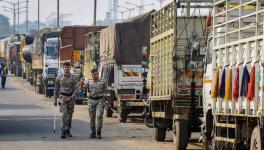Tamil Nadu Coastal Regulation, Management Plan Alarms Environmentalists

"If we don’t protect the coast, it would be difficult to protect the mainland” | (Representational image. Image courtesy: Wikimedia Commons)
The Centre’s 2019 Coastal Regulation Zone (CRZ) notification and Tamil Nadu’s draft Coastal Zone Management Plan (CZMP) have provided several “exemptions” for development along the state’s 1,076-km coastline of 12 districts, “disregarded” environmental concerns and “neglected” fishermen.
The DMK government has invited opinions on the draft and the land use map, published on June 16, of stakeholders within 45 days.
Environmental experts are concerned about neglecting crucial factors for demarcating the hazard line (HL), which is influenced by sea level, land subsistence, shoreline changes and coastal flooding.
The proposal to earmark the area up to 200 metres from the High Tide Line (HTL) on the landward side of the seafront from 500 metres has raised apprehensions.
The National Centre for Sustainable Coastal Management (NCSCM) had prepared the draft CZMP on behalf of the state’s Department of Environment and Climate Change.
The HL consideration had been questioned given the increasing vulnerability in the sea and seashore. “It is very difficult to judge the HL given the vulnerability in the sea level, shoreline changes, coastal flooding and other factors. The context of demarcating the HL itself is questionable,” S Janakarajan, an expert in water management and environment and former Madras Institute of Development Studies professor, told Newsclick.
The number of exemptions for developmental activities under different categories, including the construction of ports and harbours, Department of Atomic Energy projects, mining of rare earth elements, desalination plants in areas and facilities for generating power from non-conventional energy sources, has also been questioned by environmental activists,
The notification has placed an area up to 200 metres from HTL, and 100 metres from the tidal-influenced water bodies categorised as No-Development Zone (NDZ)
“Rules for development along the coast should have been stricter. Instead, more exemptions have been provided the distance has been reduced from 500 metres to 200 metres,” he said.
Environmental pollution caused by private and government thermal stations and refineries impacts the water bodies in coastal districts, including parts of Chennai. Janakarajan alleged that the draft lacks measures to address the challenge.
KEY FACTORS NOT CONSIDERED
Fishermen and the general public dwelling alongside the coastline have been affected by climate change—sea intrusion, coastal flooding and sea level rise—in the last few years.
“We should concentrate more on protecting wetlands, marshlands, sand dunes, lagoons, estuaries, brackish water canals and creeks, which act as buffer zones along the coast. If we don’t protect the coast, it would be difficult to protect the mainland,” Janakarajan said.
Activists allege that the CRZ notification doesn’t protect natural bodies which prevent seawater from salinating the groundwater level and sea intrusion, among other important factors.
The subsidence of areas in Nagapattinam district, in the Delta region, has been cited as an example of the land sinking, effectively bringing the land surface below the sea level. Activities like compaction and extraction caused the land to sink. Janakarajan warned of severe threats in the near future given the annual increase in sea level.
The Tamil Nadu Science Forum and organisations working for environmental protection have decided to express their apprehensions regarding the draft and issues faced by fishermen to the state government.
Get the latest reports & analysis with people's perspective on Protests, movements & deep analytical videos, discussions of the current affairs in your Telegram app. Subscribe to NewsClick's Telegram channel & get Real-Time updates on stories, as they get published on our website.
























